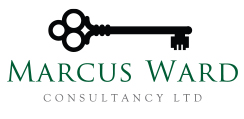If you own land and install solar panels (which we shall use as an example, although the rules apply equally to any way of generating renewable power), it is relatively straightforward; as you are either consuming the power, or are the provider supplying electricity back to the National Grid.
Where the position may get slightly more complicated is where a solar panel business buy the ‘space’ to install energy producing equipment from someone else. Many businesses are renting the roof space from others upon which to install the solar panels. The businesses may pay the roof owners with ‘free’ electricity in return for renting out this space. Supply of electricity to the owners of the site
For a solar panel business leasing a site, the supply of electricity to the owners of that site is deemed to be a supply of goods.
The business installing the solar panels is the taxable person (if they are, or should be registered for VAT) and they are supplying the owners of the site with a ‘cheap’ supply of electricity in the course of the furtherance of their business.
The supply of electricity for domestic use is a reduced-rate supply under Group 1 of Schedule 7A VATA 1994. The reduced rate of VAT is 5%. If the site owner is using the electricity for domestic purposes then the reduced rate of 5% should apply. If the electricity is being used for business purposes then the supply becomes standard-rated at 20%. However, if there is mixed use, then so long as more than 60% of the use is domestic then the whole supply will be treated as ‘qualifying use’ ie; domestic, and the 5% will apply to the entire amount. Generally speaking, VAT charged at 5% is fully or partly irrecoverable by the recipient.
So in this scenario, the land owner is providing something in exchange for this electricity use; the land owner is giving the solar panel business the use of his land. Therefore this is ‘consideration’ for a service; even if it is ‘non-monetary’ consideration.
This means that the solar panel business will have to calculate a value for this consideration and then charge 5% (or 20%) VAT as necessary, on this amount if they are VAT registered.
The value placed on this non-monetary consideration is not usually a concern for the land owner making the supplies of this land, as this land supply is itself exempt from VAT.
The supply of the land
This is a supply of land by the owner of the site. Unless the land has been ‘opted to tax’ (OTT) then this supply will be exempt from VAT. If the land has been OTT by the landowner – the parties will need to look at the valuation of the (non-monetary) consideration as this will be subject to VAT at 20%. If there is no OTT and the supply is exempt; for a non-VAT registered person, this will have no impact, and this income will not be included in taxable supplies which count towards the VAT registration threshold. If a VAT registered entity makes exempt supplies of land, consideration must be given to his partial exemption position.
VAT consequences of the Feed-In Tariff
In recognition of the higher cost of producing electricity in this manner, people participating in the Feed in Tariff scheme will receive payment under a “generation tariff”. This payment is not consideration for any supply and it is therefore outside the scope of VAT.
Supply of electricity to the electricity board
In addition to the Feed-In Tariff there is the additional income which you may receive from the electricity board ie; the “Export Tariff”. These payments are “consideration for supplies of electricity by people participating in the Feed in Tariff scheme to the electricity company, where they are made by taxable persons in the course of their business”. The export tariff is not outside the scope of VAT and therefore it is a supply of electricity made in the course of the furtherance of your business to the electricity supplier. It will attract standard rated VAT as it is not the supply for domestic use.
Further…
A recent Court of Justice of the European Union (CJEU – the EU’s highest court) case has ruled in favour of the taxpayer after he argued that solar panels installed on his house constituted a business for VAT purposes. This is good news for any people who supply any energy into the grid and are paid a feed-in tariff (FiT) for doing so.
It means that anyone receiving the FiT can VAT register and reclaim (at least some) VAT incurred on the purchase and installation of solar panels plus input tax incurred on any other goods and services relating to the panels.
The supply and installation of “energy saving materials”, including solar panels, is currently subject to a reduced VAT rate of 5% in the UK. The European Commission is currently challenging this policy, arguing that the tax incentive goes beyond the scope of the law. The VAT Directive only allows Member States to apply reduced VAT rates to a limited number of goods and services, which are specified in an annex to the directive. So the cost of buying and installing solar panels may increase in the future.
It is anticipated that HMRC will need to deal with “thousands” of extra registration applications resulting in significant additional VAT repayments.
